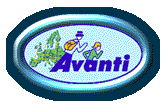Adaptations at the User Interface Level

(Slide show available)
 ser interface level adaptations are supported in AVANTI through the User Interface (UI) component, which provides interactive views of adaptive multimedia Web documents. The distinctive characteristic of the AVANTI UI is its capability to dynamically tailor itself to the abilities, skills, requirements and preferences of the users, to the different contexts of use, as well as to the changing characteristics of users, as they interact with the system. The AVANTI UI also features integrated support for various "special" input and output devices, along with a number of appropriate interaction techniques that facilitate the interaction of disabled end-users with the system. ser interface level adaptations are supported in AVANTI through the User Interface (UI) component, which provides interactive views of adaptive multimedia Web documents. The distinctive characteristic of the AVANTI UI is its capability to dynamically tailor itself to the abilities, skills, requirements and preferences of the users, to the different contexts of use, as well as to the changing characteristics of users, as they interact with the system. The AVANTI UI also features integrated support for various "special" input and output devices, along with a number of appropriate interaction techniques that facilitate the interaction of disabled end-users with the system.
Adaptations at the user interface level are triggered by a set of adaptation rules based on a mixture of user characteristics retrieved from user profiles (or provided by the user through an appropriately tailored interactive session), and dynamic assumptions concerning the state of interaction, provided by the UMS. The user characteristics that are retrieved from profiles include: (a) physical abilities; (b) the language of the user; (c) the familiarity of the user with the Web in general and the AVANTI system itself; (d) the overall interaction target (i.e. speed, comprehension, accuracy, error tolerance, or any combination of these); and, (e) user preferences regarding specific aspects of the application and the interaction. Information about the user that is dynamically inferred by the UMS, includes: (a) familiarity with specific tasks; (b) ability to navigate using the documents' navigation elements; (c) error rate; (d) disorientation; (e) user idle.
The categories of interface adaptation supported by the AVANTI UI include: (i) support for different interaction modalities and input / output devices; (ii) automatic adaptation of the presentation of interaction elements; (iii) task-based adaptive assistance; (iv) awareness prompting; (v) limited support for error prevention; (vi) limited support for metaphor-level adaptation.
Although at present, most of the adaptations at the user interface level are associated with the provision of accessibility to people with sensory or motor disabilities, the architecture of the respective module allows for easy additions or modifications to the adaptation rules (to include for example adaptations related to additional user characteristics or the context of use) without revisiting the actual implementation of the interface.
|





